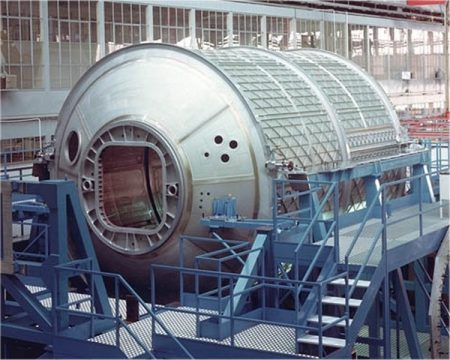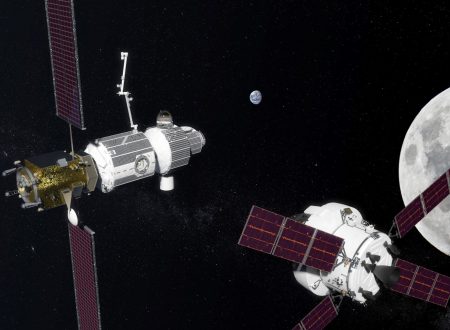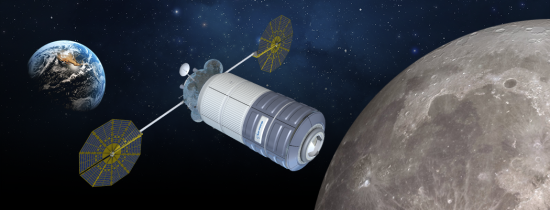July 26, 2017 – NASA continues to have aspirations to develop a Deep Space network which includes a habitat in permanent lunar orbit. So the agency has looked in its closet of abandoned and unfinished projects from the Space Shuttle era and found what was once referred to as a Multipurpose Logistics Module (MPLM).
MPLMs were flown in the cargo bay of the now retired shuttles, and after the latter program ended the three that were developed were put on the shelf. Built for NASA by the Italian Space Agency, the three were aptly named Leonardo, Raffaello, and Donatello. The former two flew 12 missions between 2001 and 2011. Then Leonardo was adapted for use on the International Space Station. Raffaello was retired. And Donatello, which never flew sat in a NASA warehouse at the Kennedy Space Center in Florida. That is until recently when NASA contracted Lockheed Martin to build a space habitat prototype. Donatello was chosen.
Lockheed Martin has had a habitat on its drawing boards for years, and now it is getting the opportunity to make it a reality. Seen in the Space Station Processing Facility at the Kennedy Space Center, Donatello is being worked on today so that it can become the model for what eventually will become a permanent Deep Space habitat circling the Moon.

Donatello won’t ever fly. It will be a test bed prototype. It will allow NASA to work out all the kinks in creating the permanently-crewed, lunar orbiting spaceport. And it will become a place for the newly picked 2017 astronauts to practice and simulate what life will be like in Deep Space.
Once finally launched on top of the Space Launch System (SLS), NASA’s next generation heavy launch rocket, the Deep Space Gateway placed in lunar orbit will serve as a way station for astronauts coming from Earth and going on to other missions in Deep Space. It will be designed to operate autonomously when no human crews are present. And because it will no longer be in close proximity to Earth’s sheltering Van Allen Belts, will give NASA a laboratory for experimenting
The Deep Space Gateway will operate autonomously in the absence of human crews. But when crews are present it will become NASA’s living laboratory for experimenting with technologies designed to protect human crews beyond Earth orbit where cosmic and gamma ray bursts would be among the many dangers these pioneers of outer space would face.
On its website, NASA describes the Gateway as a small habitat with docking capability, airlock, electric propulsion system, and attached logistics module.
States William Gerstenmaier, NASA Associate Administrator, Human Exploration and Operations, “the gateway could move to support robotic or partner missions to the surface of the moon, or to a high lunar orbit to support missions departing from the gateway to other destinations in the solar system.”











